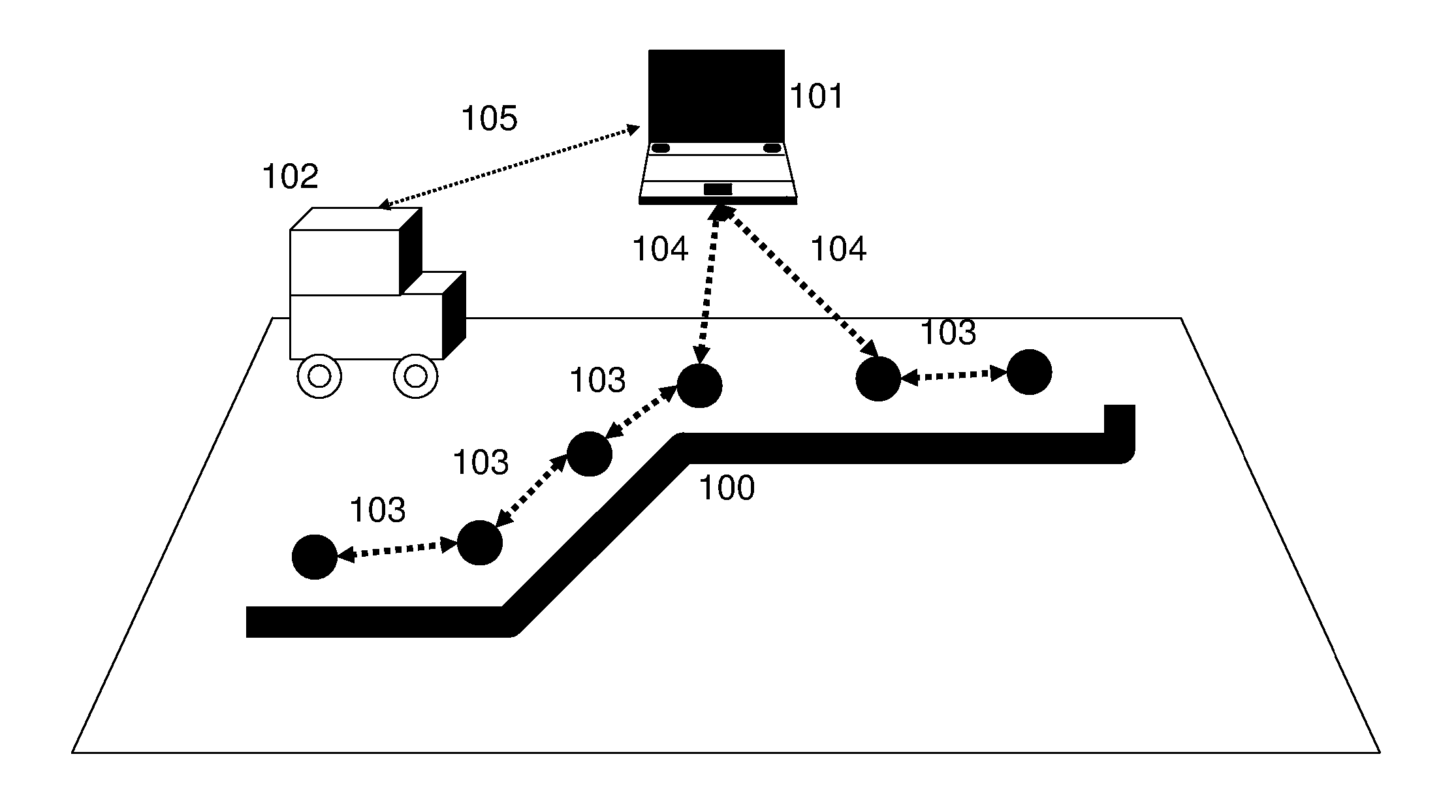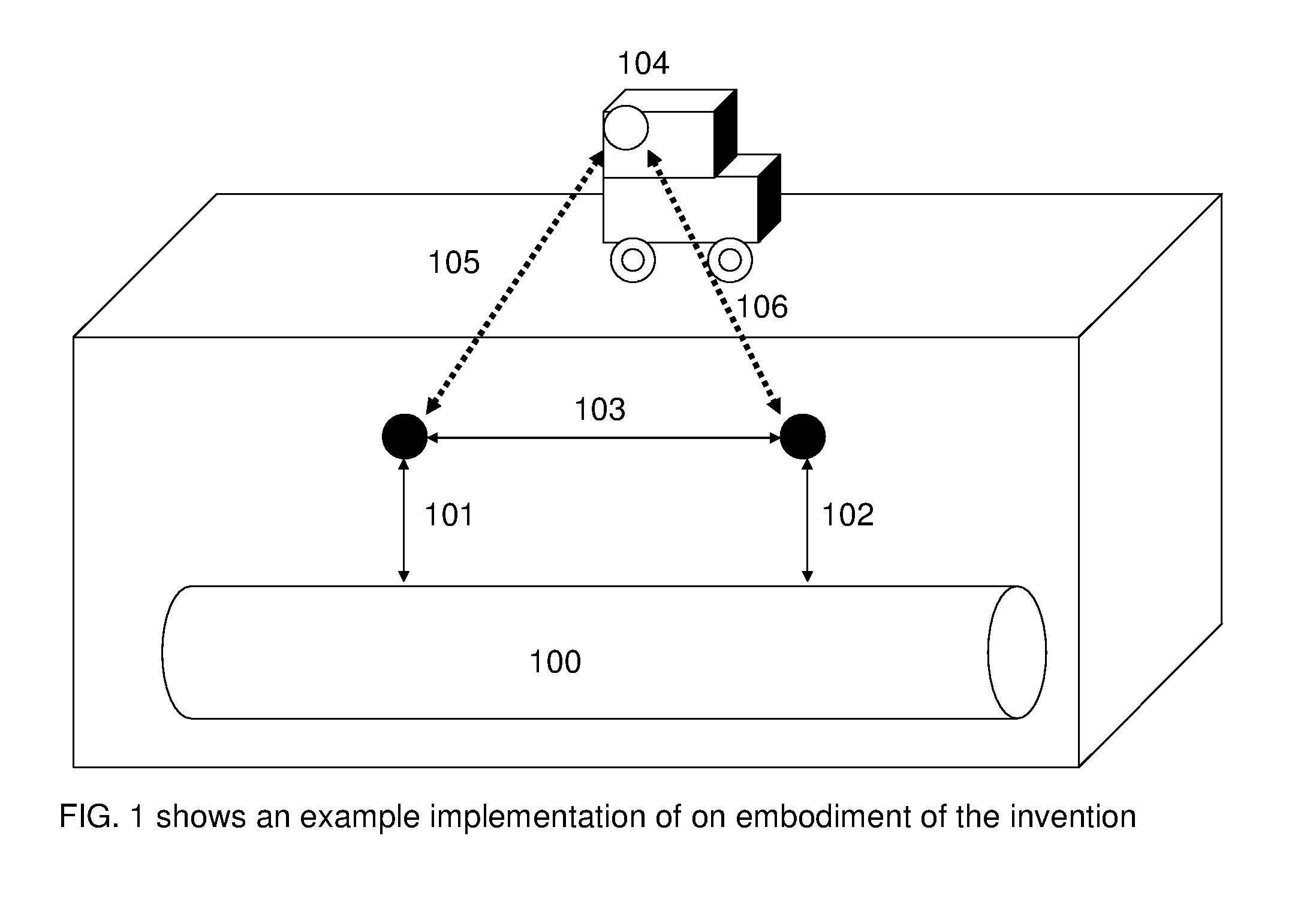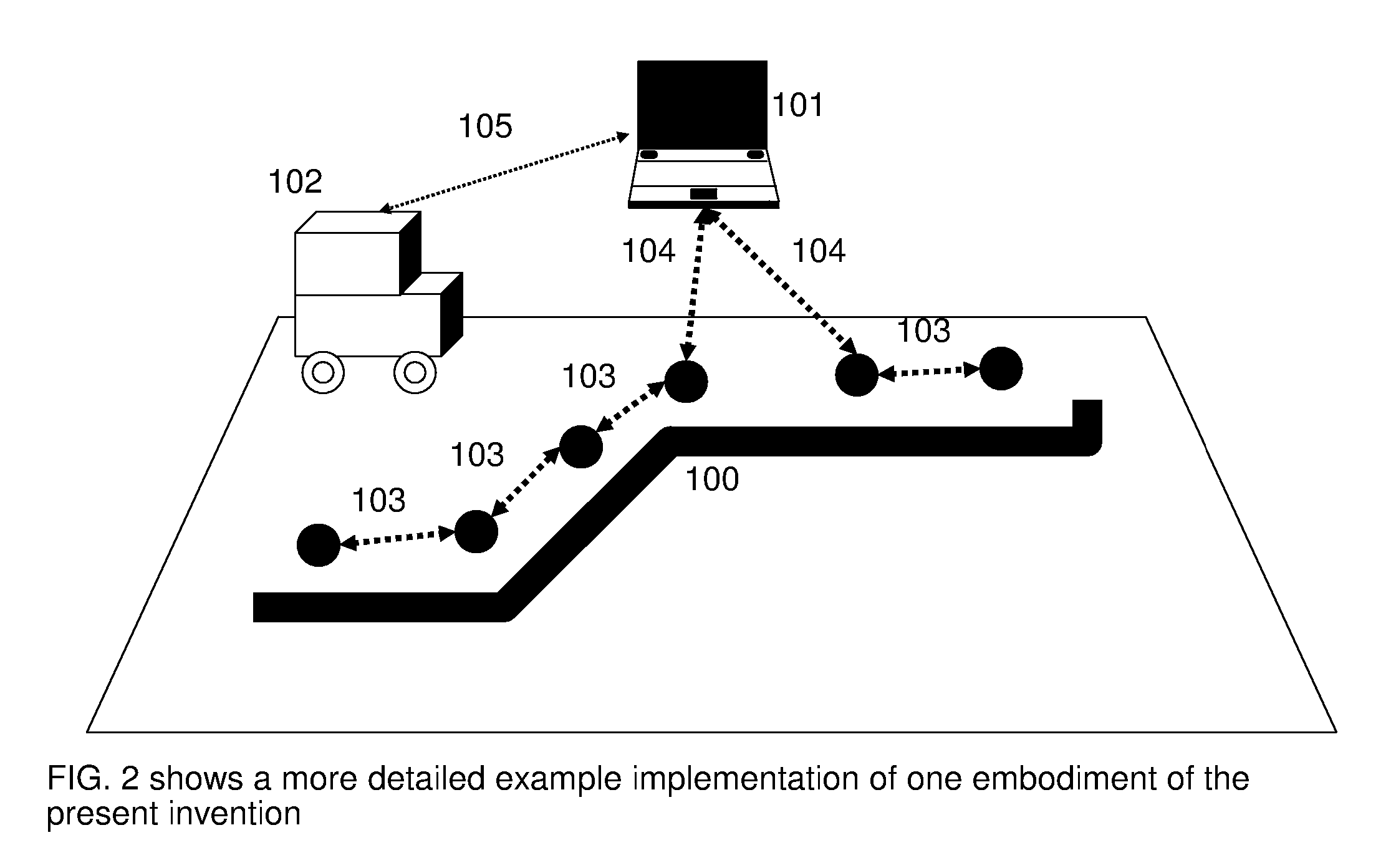Mapping and Detection of Pipelines using Low Power Wireless Sensor Network
a wireless sensor and pipeline technology, applied in the direction of burglar alarm mechanical actuation, using reradiation, instruments, etc., can solve the problems of most costly and dangerous type of accident, death and destruction, unintentional damage to underground facilities during excavation, etc., to achieve low power wireless, small size, and low cost.
- Summary
- Abstract
- Description
- Claims
- Application Information
AI Technical Summary
Benefits of technology
Problems solved by technology
Method used
Image
Examples
Embodiment Construction
[0021] To more fully appreciate aspects of certain embodiments of the present invention, a brief discussion of techniques proposed in the prior art for collecting measurement data from wireless sensor networks is appropriate. Wireless sensor networks are usually implemented as a collection of small sensor devices (or “nodes”) communicating over low-power wireless links and powered by a battery. As mentioned above, the nodes of a wireless sensor network may be distributed in an ad-hoc manner. In such ad-hoc sensor networks, the communication between the sensor nodes is typically established via protocols that self-configure the ad-hoc network, as opposed to the designed communication topology of traditional networked measurement systems. Because these sensor nodes generally run on battery power and are expected to last for several years, severe constraints are typically placed on the amount of computation, and particularly on the amount and range of communication of the sensor nodes....
PUM
 Login to View More
Login to View More Abstract
Description
Claims
Application Information
 Login to View More
Login to View More - R&D
- Intellectual Property
- Life Sciences
- Materials
- Tech Scout
- Unparalleled Data Quality
- Higher Quality Content
- 60% Fewer Hallucinations
Browse by: Latest US Patents, China's latest patents, Technical Efficacy Thesaurus, Application Domain, Technology Topic, Popular Technical Reports.
© 2025 PatSnap. All rights reserved.Legal|Privacy policy|Modern Slavery Act Transparency Statement|Sitemap|About US| Contact US: help@patsnap.com



